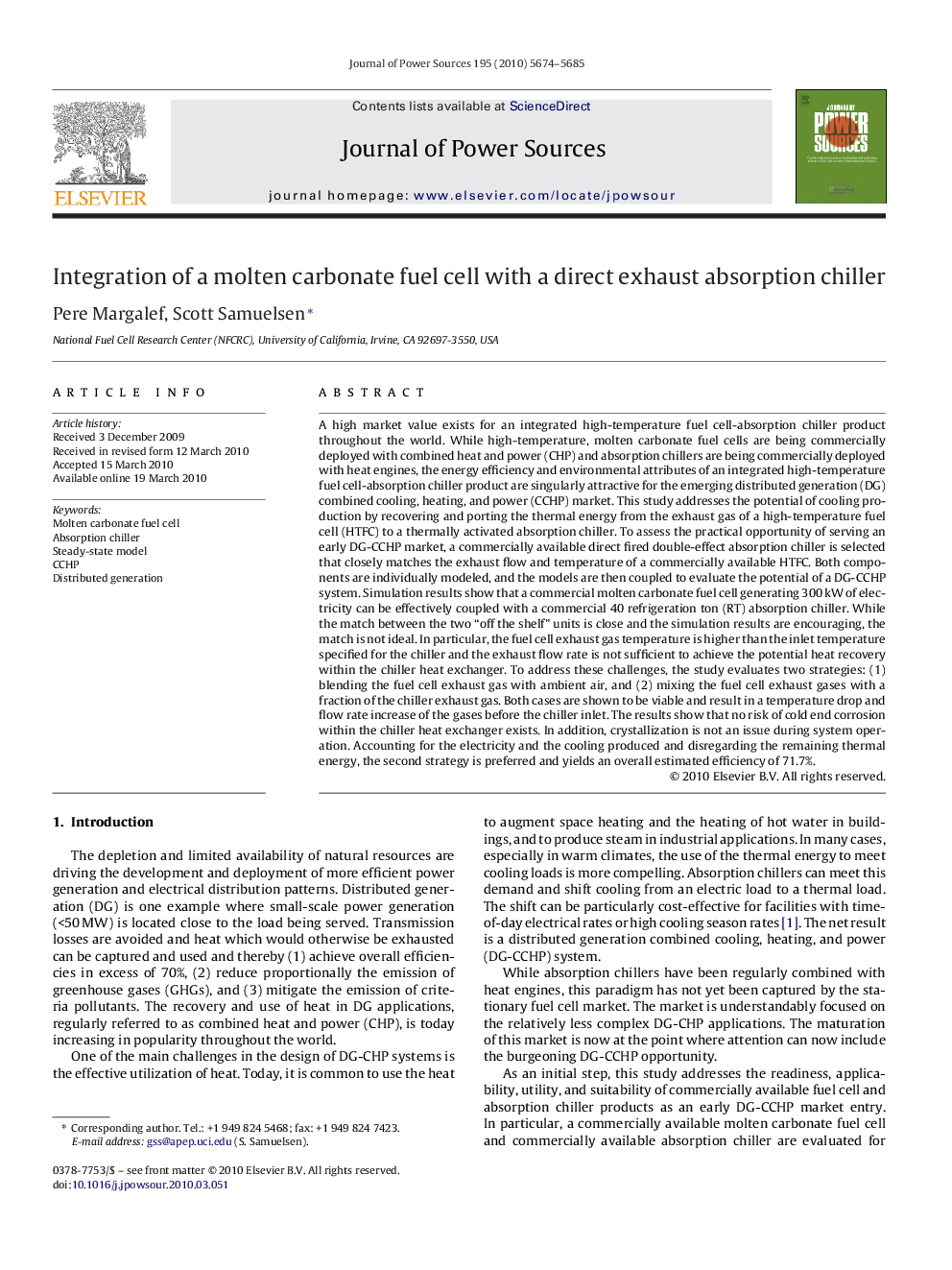| کد مقاله | کد نشریه | سال انتشار | مقاله انگلیسی | نسخه تمام متن |
|---|---|---|---|---|
| 1293734 | 973564 | 2010 | 12 صفحه PDF | دانلود رایگان |

A high market value exists for an integrated high-temperature fuel cell-absorption chiller product throughout the world. While high-temperature, molten carbonate fuel cells are being commercially deployed with combined heat and power (CHP) and absorption chillers are being commercially deployed with heat engines, the energy efficiency and environmental attributes of an integrated high-temperature fuel cell-absorption chiller product are singularly attractive for the emerging distributed generation (DG) combined cooling, heating, and power (CCHP) market. This study addresses the potential of cooling production by recovering and porting the thermal energy from the exhaust gas of a high-temperature fuel cell (HTFC) to a thermally activated absorption chiller. To assess the practical opportunity of serving an early DG-CCHP market, a commercially available direct fired double-effect absorption chiller is selected that closely matches the exhaust flow and temperature of a commercially available HTFC. Both components are individually modeled, and the models are then coupled to evaluate the potential of a DG-CCHP system. Simulation results show that a commercial molten carbonate fuel cell generating 300 kW of electricity can be effectively coupled with a commercial 40 refrigeration ton (RT) absorption chiller. While the match between the two “off the shelf” units is close and the simulation results are encouraging, the match is not ideal. In particular, the fuel cell exhaust gas temperature is higher than the inlet temperature specified for the chiller and the exhaust flow rate is not sufficient to achieve the potential heat recovery within the chiller heat exchanger. To address these challenges, the study evaluates two strategies: (1) blending the fuel cell exhaust gas with ambient air, and (2) mixing the fuel cell exhaust gases with a fraction of the chiller exhaust gas. Both cases are shown to be viable and result in a temperature drop and flow rate increase of the gases before the chiller inlet. The results show that no risk of cold end corrosion within the chiller heat exchanger exists. In addition, crystallization is not an issue during system operation. Accounting for the electricity and the cooling produced and disregarding the remaining thermal energy, the second strategy is preferred and yields an overall estimated efficiency of 71.7%.
Journal: Journal of Power Sources - Volume 195, Issue 17, 1 September 2010, Pages 5674–5685